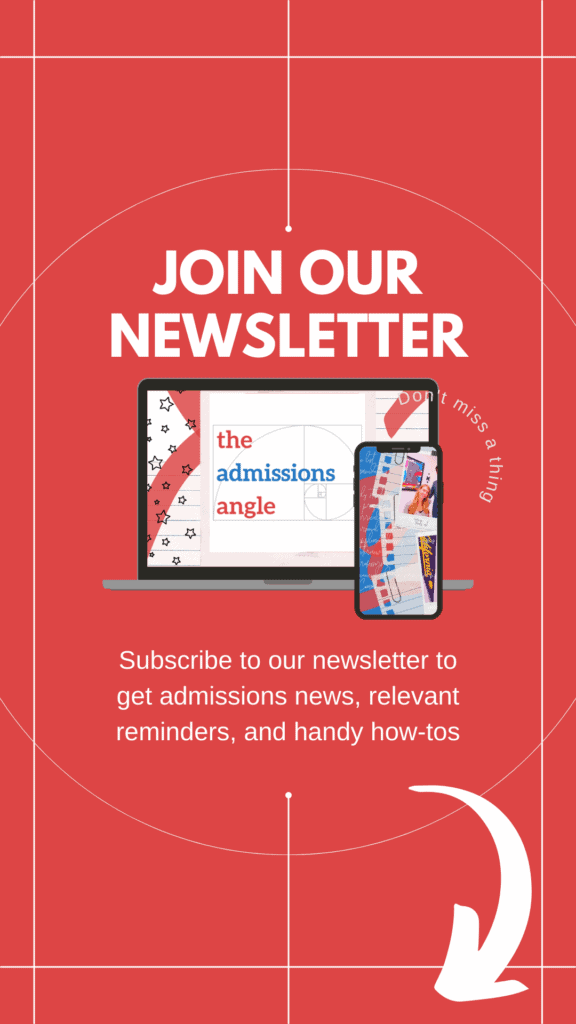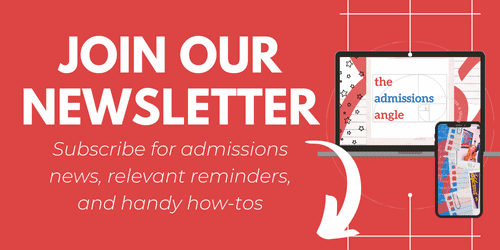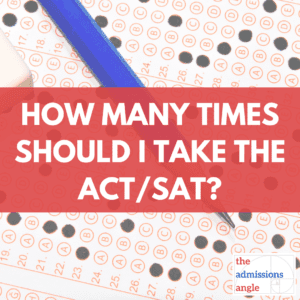
Reframing Attitudes towards Diversity in College Admissions
There are many misconceptions about how racial diversity factors into college admissions. We at The Admissions Angle want to take the opportunity to voice our support for equity throughout the admissions process, offer ways of reframing attitudes toward access to higher education, and share helpful resources that may aid in bringing about greater diversity.

By NOELLE COMPTON
This year, more than ever before, we here at The Admissions Angle sit in deep reflection of February for Black History month. Admittedly, for most of the past decade, Alex and I lived in Seoul, Korea, where our only exposure to Black History was symbolic social media gestures by corporations in our inboxes. Our experience with the “racial quotient” in the college admissions process was more related to Asian students, who were met with the unique challenges related to hyper-competition and international status. Outside of Korea, we have worked with students across the country, from Westchester to Palo Alto, and across the world, from the UAE to India, where each experience has shifted our perspective to consider how racial identity, class upbringing, and cultural diversity can factor into the admissions process.
But now, as some of you may know, The Admissions Angle is headquartered in the Bronx, New York, a borough that is more than 35% African American or Black, as of 2018. This has given us yet another perspective on the populations that we serve and has sharpened our awareness to some of the unique challenges that Black students face in their pursuit of higher education. In this article, I want to address some of the issues that Black students encounter in the college application process, and challenge some of the assumptions and misconceptions that we hear about diversity in admissions. I will begin by discussing how our own perceptions have been shaped throughout the past year, which will offer a bit of context on these views.
Diversity enriches the educational experience. We learn from those whose experiences, beliefs, and perspectives are different from our own, and these lessons can be taught best in a richly diverse intellectual and social environment.
The Admissions Angle and the Bronx
2020 was a year of extremes in many senses of the word. The pandemic disproportionately affected the Bronx community, where the median household income is $38,467 (only two-thirds of the national average, $61,937) and yet the largest share of household value is in the $500-700k range. Meanwhile, an enormous share of the Bronx population risks their lives on the frontline of the pandemic response: the top three industries that employ residents of the Bronx are Health Care & Social Assistance (146,062 people), Retail Trade (67,166 people), and Accommodation & Food Services (58,501 people).
In tandem with the pandemic and subsequent response, Black Lives Matter and the George Floyd protests drew our attention not only to the economic inequality faced by Black men, women, and children across the nation, but also the disproportionately violent response of members of our police force. Qualitatively speaking, Alex and I did not see the widespread peaceful protests in the Bronx that the media noted in Brooklyn or Manhattan, but after seeing the response to the limited protest activity in our own neighborhood, the reason became clear (per Human Rights Watch):
“About 10 minutes before an 8 p.m. curfew – imposed after looting elsewhere in the city – scores of police officers surrounded and trapped the protesters – a tactic known as “kettling” – as they marched peacefully through Mott Haven (South Bronx). Just after 8 p.m., the police, unprovoked and without warning, moved in on the protesters, wielding batons, beating people from car tops, shoving them to the ground, and firing pepper spray into their faces before rounding up more than 250 people for arrest.”
In other words, the peaceful protestors were prevented from leaving the area before the curfew was imposed, then brutally detained and arrested once it was. Predictably, this episode evaded widespread media attention, as NYC turned its eyes to the events in Manhattan, but as Alex and I watched in horror, we realized the privilege inherent in the act of protest itself.
Now, you may be reading this and wondering what it has to do with education, college admissions, The Admissions Angle, or the other pieces of information that we are known to espouse. In essence, the irony of The Admissions Angle being headquartered in the Bronx is not lost on us. Independent educational consulting is an expensive (and complex) endeavor that disproportionately favors the rich and privileged, and yet we house our enterprise in a place with the highest percentage of adults who have not completed high school (45%), let alone college, in NYC.
This reality is not easily ignored. Because aside from witnessing the harsh conditions of a neighborhood on the precipice of gentrification that will only deepen the socioeconomic, racial, and educational divide, we have prospective clients voluntarily bring up issues of race all the time. We have had would-be clients accuse colleges of “only wanting minorities,” “giving preferential treatment to Black people,” and “rejecting my kid because he’s white.” We have had other prospective clients remove schools from their lists due to demographic breakdowns with veiled racist terms (i.e. “I don’t want my kid going somewhere too urban”). Luckily, we here at The Admissions Angle are in the position of only choosing to work with clients who are in agreement with our fundamental vision: that all students should be encouraged to be their best selves; that all students should have access to information that will support this endeavor; and that all students deserve high quality higher education, if they want it.
Black History Month is about remembering the struggles that Black folks have endured on the path to an “equality” that is perpetually outside of reach. The Admissions Angle is firmly on the side of equality, of course, but today I want to write about equity in higher education– the idea that resources should be distributed proportionally due to need, rather than in strictly equal measure. This distinction has been parsed by scholars and activists, particularly as it relates to socioeconomics and race, but it is just as easily applied to education.
The following information is intended to serve as a cursory examination of diversity in higher education; it is also meant to explain and reaffirm The Admissions Angle’s commitment to prioritizing equity and equality of resources. But more than this, it is a public statement of value that will hopefully be perceived as more authentic than “hashtag-CSR” (after all, we are no corporation). We understand that our stance may offend or even anger the very types of people who may be inclined to seek our services. Nevertheless, these values are built into The Admissions Angle’s foundation, and we can only hope that by making these values known and understood, that we can weed out bad actors from the start and attract types of allies and families who support our vision.
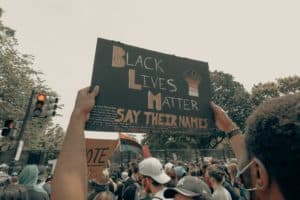
Why do colleges want diversity?
Now, onto admissions. First of all, we must ask, what is diversity? Colleges and corporations alike tend to use the word diversity as a blanket term to indicate open-mindedness and gesture toward a vision of representation, mixed perspectives, and broadened horizons. For our purposes, we mean diversity to refer specifically to racial and ethnic diversity, although many different types of diversity exist.
When considering why colleges are building diverse classes, the American Council on Education said it best in its statement “On the Importance of Diversity in Higher Education”:
Diversity enriches the educational experience. We learn from those whose experiences, beliefs, and perspectives are different from our own, and these lessons can be taught best in a richly diverse intellectual and social environment.
It promotes personal growth-and a healthy society. Diversity challenges stereotyped preconceptions; it encourages critical thinking; and it helps students learn to communicate effectively with people of varied backgrounds.
It strengthens communities and the workplace. Education within a diverse setting prepares students to become good citizens in an increasingly complex, pluralistic society; it fosters mutual respect and teamwork; and it helps build communities whose members are judged by the quality of their character and their contributions.
It enhances America’s economic competitiveness. Sustaining the nation’s prosperity in the 21st century requires us to make effective use of the talents and abilities of all our citizens, in work settings that bring together individuals from diverse backgrounds and cultures.
In other words, a diverse environment is an edifying one, and what greater purpose does a college have than to edify?
One of the biggest criticisms of statements like this one is that they indicate barely-disguised attempts at good PR. This may be the case, even for admissions offices, but the point remains: so what if it is? Whether for the purest of reasons or not, nearly every college across the country has incorporated statements of diversity and inclusion, indicating that in the coming years, campuses will continue to place increasing emphasis on attracting a diverse class.
College Admissions Services
Schedule a Free Consultation
Meet with a mentor one-on-one via video chat to talk about your son/daughter’s admissions plan. Afterwards, receive a no-obligation Customized College Roadmap (CCR) with advice on courses, extracurricular activities, standardized tests, and Admissions Angle strategy.
What are colleges doing to attract more diverse students?
There are a number of barriers to entry for higher education that are outside the hands of the student. These reasons include access to a quality public school with quality teachers, access to standardized test opportunities and materials, home responsibilities that prohibit students from actively engaging in extracurricular activities– none of this is to mention added problems that disproportionately affect underserved populations, like transportation difficulties, food insecurity, etc. Colleges already do their best to account for some of these issues. On college applications, they ask questions that give context to the student’s profile, ranging from parents’ occupations and incomes to personal job experience to essay prompts designed to elicit explanations for a student’s home situation.
But for a long time, one of the largest barriers to entry for underserved populations was standardized testing (ACT/SAT). Standardized testing was intended to compare apples to apples, so to speak. While grades are largely dependent on the school and teacher (i.e. an A from a prestigious prep school is perceived to be harder to come by than an A in an inner-city public school), everyone has to take the same SAT. If you study hard and take your education seriously, you will score highly, a reflection of the meritocracy that is built into the American ideal. It can’t be anything but fair, right?
Wrong. Aside from the SAT’s origins, which are rife with pseudo-science, eugenic principles, and overt racism-sexism-xenophobia, the practical reality of the situation is this: Black (and Latinx) folks routinely score lower on the SAT than do whites; moreover, they do not have access to expensive test preparation services that their wealthy counterparts do, and are more likely to be limited in terms of high quality education in schools, tutors, or the time and money to take the test over and over again (which, by the way, is further perpetrated by College Board’s stranglehold on the system and deep, profitable ties to NYC hedge funds). There are many articles on the racism of standardized testing that are far more comprehensive and succinct than my explanation here, and I would encourage everyone to spend some time checking these out.
Regardless of the SAT’s inherent biases, colleges have long placed great value on this outmoded system. Why is that? The easiest explanation is that it simplifies things. The academic index, the cross section between GPA and standardized test score, provides a simple threshold to determine a students apparent academic aptitude. This makes it pretty easy to sort people into “maybe” and “probably not” piles and is supposedly a more accurate indicator than GPA alone.
As with many things, the COVID-19 pandemic had a transformative effect on college admissions, mostly due to the College Board’s bungled handling of SAT administration, which may have unintended yet ultimately positive effects. Beginning with the University of California school systems, the majority of colleges in America opted for a “test-optional” approach, allowing students to apply without a test score, unpenalized. Instead of relying on test scores, admissions officers were tasked with assessing applications more holistically, accounting for a student’s extracurricular activities, essays, and recommendations with greater weight. This has led to longer wait times for results, but is hopefully pointing toward a system that relies less on standardized test scores and is ultimately moving the needle toward equity.
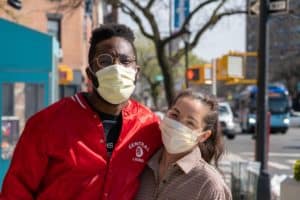
Reframing attitudes toward diversity and college admissions
This new “test-optional” system led to way more applicants to competitive colleges across the country, as this barrier to entry was lifted. Schools received record numbers of applications (Dartmouth received 29% more applications in the early decision round as compared to the year prior; MIT received an incredible 62% more within the same metric), which has predictably led to despair among the privileged elite.
The quotes that I listed earlier in the article– those are real, and every time someone tries to make the case that their child’s “spot” went to a minority, I am genuinely baffled. To those people who find themselves afflicted with such feelings, I suggest that we reframe our thinking to consider at which points a “leg up” — a boost, an advantage, a helping hand — can come into play.
What does it mean to receive a leg up? We believe that attending a well-regarded public school is a leg up. We believe that taking the SAT/ACT more than once, applying to schools without a fee waiver, and having parents who are planning to contribute to your tuition are legs up. We believe that paying for tutors, participating in sports that require expensive equipment and travel, living without the responsibility of caring for siblings and other family members are legs up. We believe that the ability to complete homework without worrying about reliable internet access or a safe space are legs up. If these are qualities that you have enjoyed throughout your high school experience, then indeed, you have already received your “leg up”.
To be sure, this does not mean that you didn’t work hard. Grind culture is absolutely a thing, and we have worked with many students who regularly toe the line of burn out, do homework until 3am, participate in many clubs, sports, service activities, etc. To these students, we commend your hard work, and you will certainly find your way into a great college. However, the conception that students of color skate by on race alone or that you are entitled to a “spot” that is threatened has got to stop.
This brings me to my next point: If you are a BIPOC student hoping to apply to competitive universities, please remember that you cannot rely on your race alone as a metric for admission. Your grades must still be excellent. Your participation in activities and opportunities must be outstanding. The door is open a bit wider than previously, but you must still travel far to reach it. There are a multitude of resources available to help you. Take advantage of them, and you will go far!
The Admissions Angle’s commitment to diversity
I want to talk about The Admissions Angle’s commitment to diversity not as a means of self-congratulatory virtue signaling, but rather as a resource for readers to consider. We have undertaken many projects that allow us to contribute to our greater community and expand our expertise to reach populations who would otherwise not have access to these tools.
- The Admissions Angle blog – We update our blog often with articles that contain free, helpful information for parents, college applicants, and young high schoolers.
- Free webinars – Twice monthly, we conduct webinars on subjects ranging from Common App dos and don’ts to choosing the right extracurricular activities. These are free to attend. If you do not have the time to attend, recordings are made available for your later convenience.
- Bronx Scholars Opportunity Program (BSOP) – Each year, we take on as many scholarship students as we can, offering them the same 1:1 meetings and tools as we do to our paying clients. We prioritize students from the Bronx, but are open to applications in the other boroughs and surrounding region. This year, our BSOP students received admission to Cornell, UNC Chapel Hill, UVA, Tulane, UMiami, Howard, and several other schools with our help.
- TAA Transfer Scholars Program– Each year, we take on students from local community colleges who cannot afford to solicit help transferring into four year universities. We also offer free private webinars to assist with these applications.
- Essay Writing Workshop fee waivers – Each summer and fall, we offer paid college essay workshops that come with video instruction and proprietary workbooks and materials. Last year, we issued approximately fifty free waivers for these workshops to students without the means to pay for attendance.
- Customized College Roadmaps – To any student who reaches out, we provide a complimentary consultation session and Customized College Roadmap to help you establish your Admissions Angle strategy.
In the past, we have kept initiatives like BSOP close to the vest. We are not interested in exploiting the successes of the students we work with, and prefer to vet our applicants through local services who know how to reach the most deserving students. However, we mention it now as evidence of our commitment to improving access to higher education in the Bronx, especially for students of color. Moreover, if you are a prospective client, please know that part of our service fee goes to fund these initiatives and ensure that we are able to continue offering these opportunities to underserved populations.
On behalf of The Admissions Angle, I hope that everyone reads this message in the spirit in which it was intended: a spirit of free information, commitment to diversity, recognition of our many advantages, and celebration of the small changes we make today to build a better, brighter tomorrow.
Happy Black History Month, and may you all be a part of the change you want to see.


